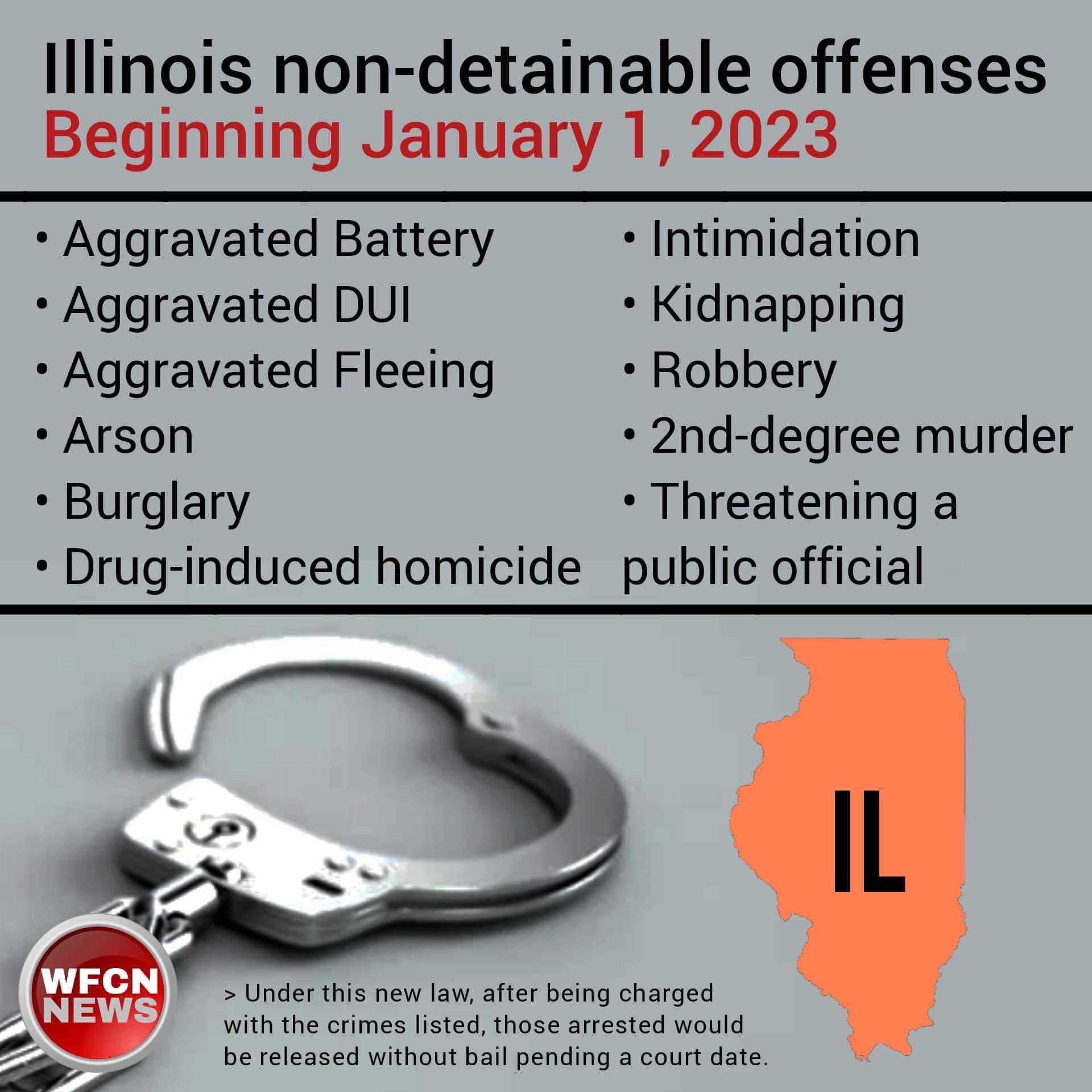SAFE-T Act Infographic Analysis

SAFE-T Act Infographic Analysis
You may have seen this infographic or one like it on your social media feeds recently:

Source: @Kurzawa4WillCO
Because it does not provide any references, this image (or others like it) may have been dismissed as "misinformation" or "right-wing propaganda." However, after attending Justin Biggs' public safety townhall, I was compelled to look into this law, the SAFE-T Act (HB3653 now Public Act 101-0652), more closely and found that this is correct as of the first week of September 2022! (Illinois law enforcement unions and associations are working with the sponsors of this act to address some of the more egregious issues before they become effective on January 1, 2023.)
The infographic above claims people arrested for the listed offenses will be released without bail pending a court date. The major change implemented by this act is the replacement of bail with "pretrial release," including a default presumption of releasing arrestees. There is also a change that police will not arrest those "accused of traffic and Class B and C criminal misdemeanor offenses," instead, only writing a citation (725 ILCS 5/109-1 (a-1)). These "criminal misdemeanor offenses" are the ones better classified as "non-detainable offenses" and should not be confused with the felony offenses described in the graphic. For felonies, police are still able to detain and arrest suspects, but the law identifies only six (6) charges and one (1) circumstantial case by which a defendant may be denied pretrial release (725 ILCS 5/110-6.1):
- forcible felony AND pretrial release presents "a specific, real and present threat to any person or the community"
- stalking or aggravated stalking AND "poses a real and present threat to the physical safety of a victim of the alleged offense" AND "denial of release is necessary to prevent fulfillment of the threat upon which the charge is based"
- the victim of abuse was a family or household member AND "at the time of the alleged offense, was subject to the terms of an order of protection" AND pretrial release presents "a real and present threat to the physical safety of any person or persons"
- domestic battery AND pretrial release presents "a real and present threat to the physical safety of any person or persons"
- any offense under Article 11 of the Criminal Code of 2012 (Sex Offenses), except for Sections 11-30 (Public indecency), 11-35 (Adultery), 11-40 (Fornication), and 11-45 (Bigamy and Marrying a bigamist) of the Criminal Code of 2012 AND pretrial release "poses a real and present threat to the physical safety of any person or persons"
- Any of several firearms-related offenses, involuntary servitude, or involuntary sexual servitude AND pretrial release presents "a real and present threat to the physical safety of any person or persons"
- the defendant is a flight risk and charged with a felony listed above or a felony other than a Class 4 offense.
As you can see, these charges do not include "aggravated battery", "aggravated DUI", "arson", or any of the other felony offenses listed in the infographic above. Unless the state can prove the arrestee is a flight risk in conjunction with the listed infographic offenses, they will likely be granted pretrial release, as claimed. The one mitigating feature not described in the infographic is the State has an opportunity to present evidence to a judge the person presents a threat to others in order to detain the person before trial (725 ILCS 5/110-4. However, that evidence would have to be collected within 24-48 hours of the arrest (725 ILCS 5/110-6.1). For already stretched thin law enforcement agencies, this compressed evidence collection timeline may result in violent offenders being released who should not be.
Reforms which would reduce recidivism rates, reduce public violence, and replace the us-versus-them mentality with a community improvement mindset would find supporters across the political spectrum. Unfortunately, the reforms and changes enacted by the SAFE-T act will not accomplish those goals. In the interests of respecting your time, I will not expound on them here. I do encourage you to attend Justin Biggs' next town hall in Caseyville on September 13th to learn more.
As your County Board member, my goals will always be 1) to respect your intelligence by providing you with accurate and primary-sourced information; 2) to earn your trust by clearly stating my position; and 3) to consider alternative perspectives.
Until next week!
